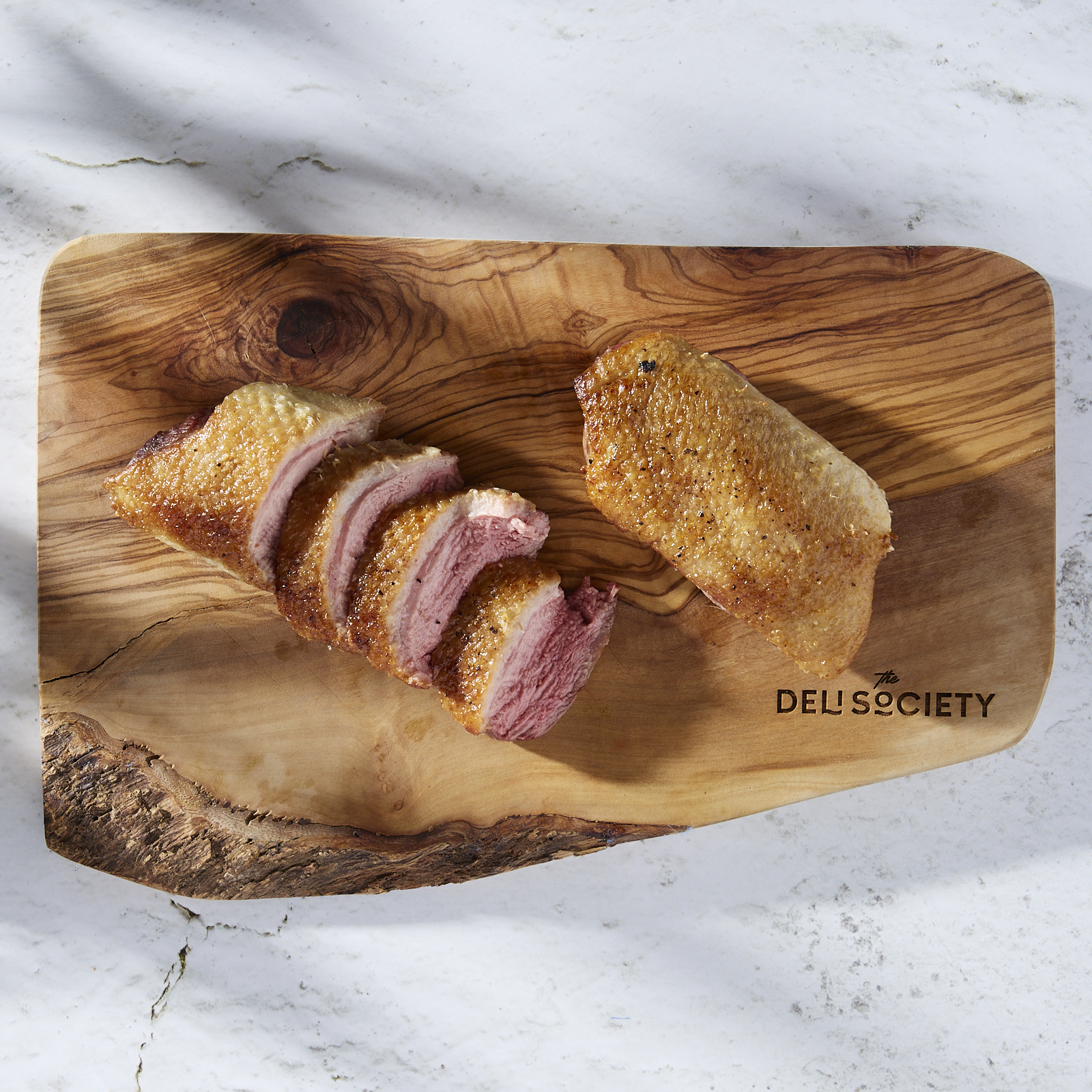WHOLE DUCK
The whole duck is rich and succulent and deserves a spotlight in any dining occasion. It’s an ideal size for festive gatherings, family dinners, and special occasions. The whole duck comprises several parts of the bird, including the breast, legs, wings, and thighs. Each part contributes to the overall flavour and texture, offering a delicious balance of lean meat and flavourful fat.
Texture
Whole duck can offer a variety of textures depending on the way it’s cooked, from crispy skin to tender meat.
Cooking Methods
1. Roasting
Roasting the duck helps it achieve crispy skin and succulent meat. This can be achieved by scoring the skin and seasoning generously. The slow and steady heat from roasting preserves the natural juices of the duck, resulting in that melt-in-your-mouth texture.
2. Braising
Braising cooks the meat in a flavourful liquid, resulting in tender, fall-off-the bone delight. Braising tenderises the meat, infusing it with with rich flavour from the cooking liquid.
3. Grilling
Grilling duck adds a smoky flavour to the duck by grilling it over an open flame. Marinate the duck beforehand to enhance the moisture and overall flavour. Grilling will ultimately give it a hint of smokiness that’s perfect for summer gatherings.
Iconic Dishes
Peking duck may be the most known of classic whole duck cuisines, a traditional Chinese dish. The Duck is traditionally roasted until the skin is crispy and golden brown, then thinly sliced. A French classic Duck à l’Orange, a tender roasted duck drizzled with a tangy orange sauce.
